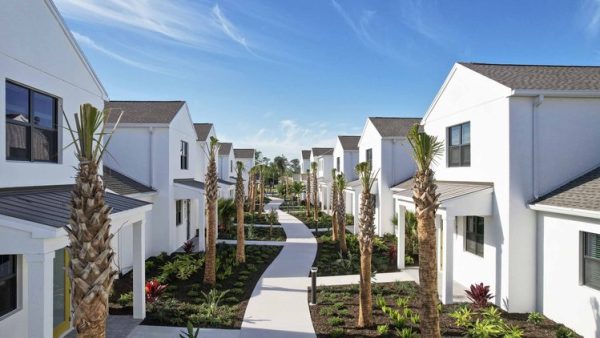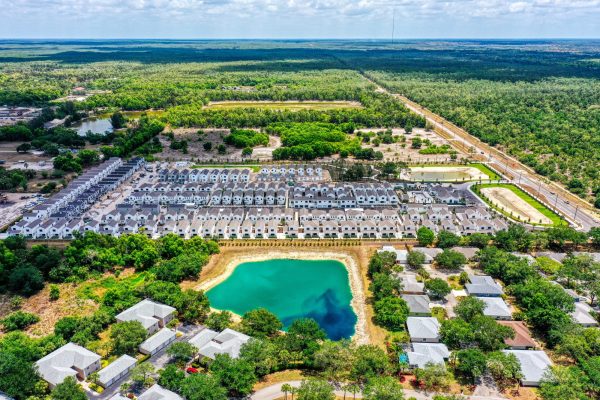Revisiting the BTR Boom: A Perspective Check from Early Movers
Build-to-rent (BTR) has evolved into one of the most watched sectors in U.S. real estate. A new asset class for some, Halstatt Real Estate Partners first entered the build-to-rent space in 2020, driven by a strategic conviction in its long-term relevance to evolving renter preferences.
Build-to-Rent: A Strategic Response to Modern Housing Needs
While broader institutional momentum around the sector has accelerated, our thesis has remained consistent: BTR addresses the needs of renters shaped by both structural housing challenges and lifestyle shifts that continue to evolve.
 Build-to-rent housing serves a growing segment of the U.S. population for whom renting is a deliberate and preferred choice. These households value flexibility, privacy, and the convenience of professionally managed communities with modern amenities and maintenance-free living. At the same time, many financially qualified households remain priced out of homeownership due to limited inventory, high entry costs, and elevated interest rates. For these renters, BTR provides a compelling alternative, offering the benefits of a single-family home without the long-term commitment of buying.
Build-to-rent housing serves a growing segment of the U.S. population for whom renting is a deliberate and preferred choice. These households value flexibility, privacy, and the convenience of professionally managed communities with modern amenities and maintenance-free living. At the same time, many financially qualified households remain priced out of homeownership due to limited inventory, high entry costs, and elevated interest rates. For these renters, BTR provides a compelling alternative, offering the benefits of a single-family home without the long-term commitment of buying.
Together, these renter groups reflect a broader shift in housing demand, especially in Sun Belt markets where for-sale supply remains constrained and demand for larger, well-located rental housing continues to grow.
From Thesis to Evidence: What the Data Tells Us
With over 1,350 BTR units in our portfolio today, Halstatt’s operational experience offers measurable insights into the resident profile this product type is serving and why it continues to resonate.
 Across our BTR communities, residents span a range of life stages and generational groups. Millennials represent nearly 50 percent of households, with Gen X and Baby Boomers also making up a significant portion of residents. Most homes are occupied by one or two individuals, and more than half of all residents have at least one pet, which reinforces the appeal of private yards and low-density living environments. In addition, over 25 percent of households include an extra bedroom beyond the number of reported occupants, reflecting a preference for space that supports remote work, guest accommodations, or added flexibility.
Across our BTR communities, residents span a range of life stages and generational groups. Millennials represent nearly 50 percent of households, with Gen X and Baby Boomers also making up a significant portion of residents. Most homes are occupied by one or two individuals, and more than half of all residents have at least one pet, which reinforces the appeal of private yards and low-density living environments. In addition, over 25 percent of households include an extra bedroom beyond the number of reported occupants, reflecting a preference for space that supports remote work, guest accommodations, or added flexibility.
These resident characteristics are further supported by broader performance indicators that align with our original investment thesis. Across the portfolio, rent-to-income ratios remain well below national averages, suggesting our communities are serving households with the financial capacity to select high-quality rental housing by choice. Leasing activity has remained consistently strong, with steady inbound traffic and application volume that continue to reflect durable demand for thoughtfully designed BTR communities.
Perspective Backed by Experience
Our early participation in BTR has shaped not just our strategy, but our approach.
Each project has helped refine our underwriting assumptions and improve our evaluation of local affordability trends, absorption timelines, and operational design. We’ve developed a deeper understanding of the build-to-rent model and continue to prioritize alignment with partners who understand both the construction and operational nuances of this product type. Equally important is our continued use of proprietary tools to support data-driven decision making. Every prospective BTR opportunity is evaluated using Precision+, our internal deal evaluation model that incorporates more than 13 unique metrics spanning core real estate data, demographic profiles, lifestyle drivers, and proprietary insights tailored to our investment strategy.
This system applies a customized weighting methodology to score each deal based on its relative strengths and risks, allowing us to benchmark new opportunities against portfolio performance and regional targets. By combining local market insights with repeatable evaluation criteria, we aim to maintain discipline while scaling exposure to the sector.
Importantly, differentiation is not only about site selection and capital discipline, but also about product design. We have leaned into more efficient, purposefully smaller floorplans that deliver the privacy and space of a single-family home while keeping monthly rents attainable. This approach allows our communities to capture a wider renter base and sustain demand even as new supply enters the market.
This experience has reinforced our confidence and selectivity as the sector matures. BTR is no longer an emerging idea; it is a recognized and sought-after segment of rental housing that rewards those with focus, discipline, and firsthand knowledge of what works.
A Segment with Enduring Demand Drivers
BTR housing continues to gain traction by serving renters whose needs are unmet by either conventional multifamily or for-sale housing. The segment offers a compelling combination of space, privacy, and convenience — features that are increasingly valued by households of all ages and life stages.
 For investors, BTR enhances portfolio diversification within rental housing by delivering features and performance drivers that distinguish it from conventional multifamily housing. It offers a resilient income profile supported by growing renter demand and development efficiencies that can be difficult to replicate in other asset classes. Communities can be delivered in phases, stabilized quickly, and repositioned in response to shifting tenant expectations. Combined with the flexibility of annual lease terms and the benefits of institutional property management, BTR stands out as a housing solution that is both operationally scalable and structurally sound.
For investors, BTR enhances portfolio diversification within rental housing by delivering features and performance drivers that distinguish it from conventional multifamily housing. It offers a resilient income profile supported by growing renter demand and development efficiencies that can be difficult to replicate in other asset classes. Communities can be delivered in phases, stabilized quickly, and repositioned in response to shifting tenant expectations. Combined with the flexibility of annual lease terms and the benefits of institutional property management, BTR stands out as a housing solution that is both operationally scalable and structurally sound.
While the delivery pipeline for both multifamily and BTR has expanded in recent years, our experience underscores that well-located communities with thoughtful design continue to see durable absorption. By intentionally targeting attainable rent-to-income levels and prioritizing functional layouts, our portfolio has maintained healthy lease-up velocity even in competitive markets.
Halstatt remains confident in the continued relevance and growth of BTR. Our experience to date has not only reinforced our conviction but provided us the insight needed to navigate its future. As the sector evolves, we believe that those with a long-term view and operational depth will continue to find meaningful opportunity in build-to-rent housing.
About Halstatt Real Estate Partners
Halstatt Real Estate Partners (“HREP”), a women-owned real estate private equity firm, has participated in the acquisition and development of over $1 billion in Southeast based real estate assets since 2011. Founded by the Sproul family, based in Naples, Florida, and a proud part of the Collier Family legacy in Southwest Florida, HREP invests in middle market, value add and opportunistic commercial and residential real estate projects. HREP works with best-in-class local and regional operating partners to maximize the value of its real estate investments. HREP invests alongside a cross-section of institutional limited partners from fund to fund including charitable foundations and endowments, domestic and international family offices, and corporate pension funds with a history of continuity. www.halstattrealestate.com

 Back
Back 
